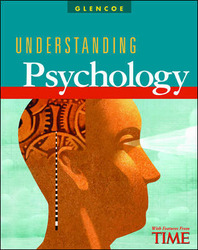
Understanding PsychologyChapter 14: Theories of PersonalityChapter OverviewsPersonality is the consistent, enduring, and unique characteristics of a person. Psychologists have proposed various theories of personality to attempt to explain similarities and provide reasons for differences in personalities. Chapter 14 focuses on the behaviorist, psychoanalytic, social learning, cognitive, humanistic, and trait theories of personality. Section 1 describes how psychologists use personality theories to organize characteristics. Theorists try to discover patterns in traits and behaviors, explain differences between individuals, explore how people conduct their lives, and determine how life can be improved. Section 2 explains the psychoanalytic theories of Sigmund Freud and his followers. Freud believed that every personality has an unconscious component and that childhood experiences, even if not consciously recalled, continue to influence people's behaviors. The psychoanalytic theory states that a personality has three parts—the id, the ego, and the superego—which serve to regulate instinctual energies. Defense mechanisms, which Freud proposed people develop to defend the ego, are explained. The section concludes with an evaluation of Freud's contributions and a review of the theories of Carl Jung and Alfred Adler. Section 3 describes the behaviorist theory of personality and discusses how behaviorists attempt to determine what causes a person to act in a specific way. Behaviorists believe that individuals' different behaviors and personalities are a result of their different learning experiences. This section examines B.F. Skinner's contingencies of reinforcement and Albert Bandura's social cognitive theory. Section 4 details the humanistic and cognitive theories of personality, both of which stress the positive aspects of human nature. Humanism maintains that all people strive for self-actualization. The section discusses Abraham Maslow's growth and self-actualization theory, Carl Rogers's self-theory, and George Kelly's personal construct theory. Section 5discusses how trait theorists believe that character traits account for consistency of behavior in different situations. By specifying people's traits, trait theorists contend, we can understand and predict their behavior. The section describes Gordon Allport's common and individual traits, Raymond Cattell's sixteen-trait theory, and Hans Eysenck's three dimensions of personality. A list of the five traits that appear regularly in different research studies, called the five robust factors, appears at the end of this chapter. |  |















